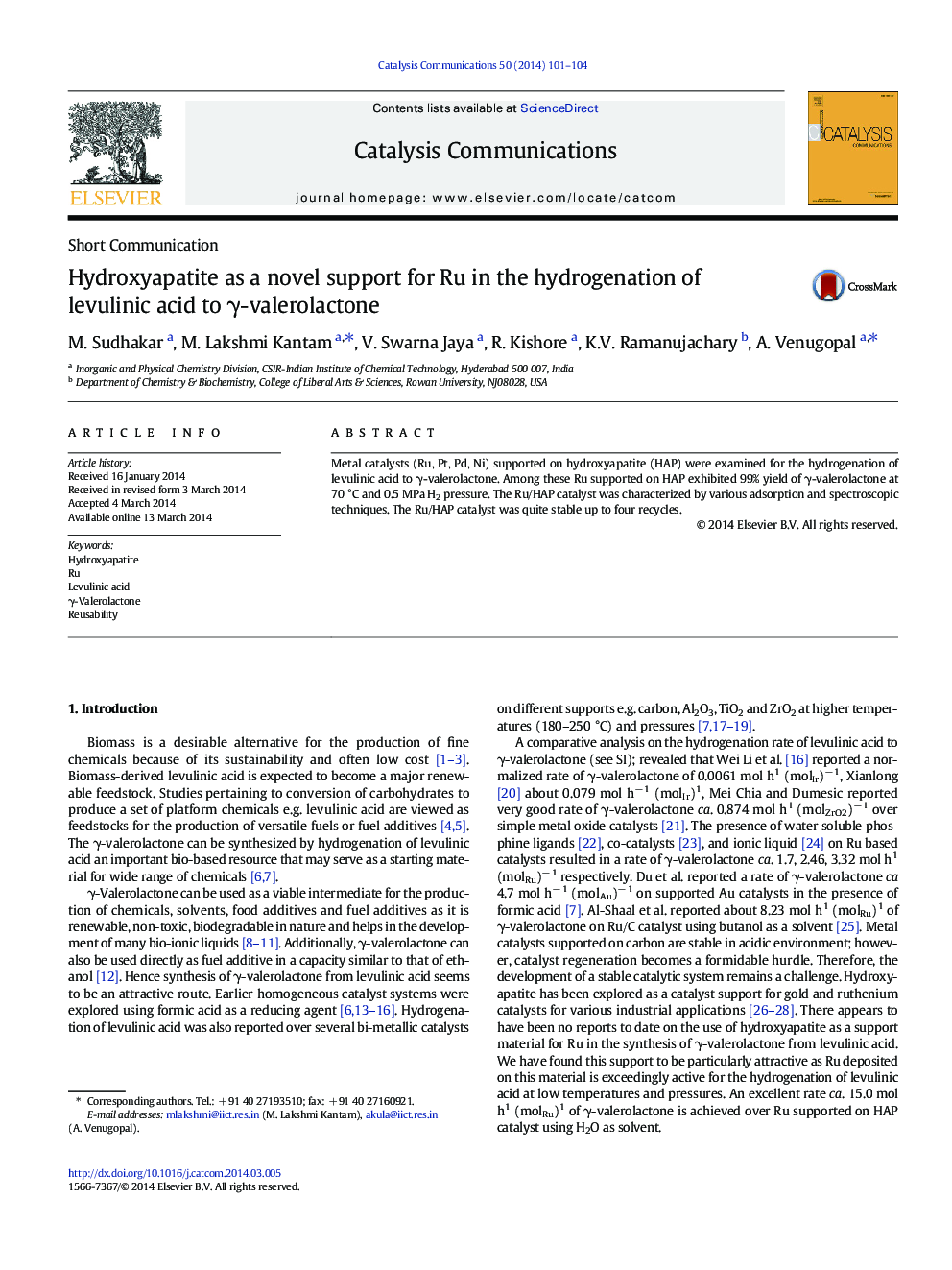| Article ID | Journal | Published Year | Pages | File Type |
|---|---|---|---|---|
| 50046 | Catalysis Communications | 2014 | 4 Pages |
•Ca5(PO4)3(OH) as a support for Ru, Pt, Pd and Ni in hydrogenation of levulinic acid•Rate of γ-valerolactone is very high over Ru/Ca5(PO4)3(OH).•Ru/Ca5(PO4)3(OH) can be used for four cycles with consistent yields.
Metal catalysts (Ru, Pt, Pd, Ni) supported on hydroxyapatite (HAP) were examined for the hydrogenation of levulinic acid to γ-valerolactone. Among these Ru supported on HAP exhibited 99% yield of γ-valerolactone at 70 °C and 0.5 MPa H2 pressure. The Ru/HAP catalyst was characterized by various adsorption and spectroscopic techniques. The Ru/HAP catalyst was quite stable up to four recycles.
Graphical abstractRu/HAP catalyst has been identified as an efficient catalyst for the conversion of biomass derived levulinic acid to γ-valerolactone at low temperature and pressure using H2O as a solvent. This method provides general approach to γ-valerolactone synthesis which can replace ethanol in the petrol and in the production of jet fuels.Figure optionsDownload full-size imageDownload as PowerPoint slide
